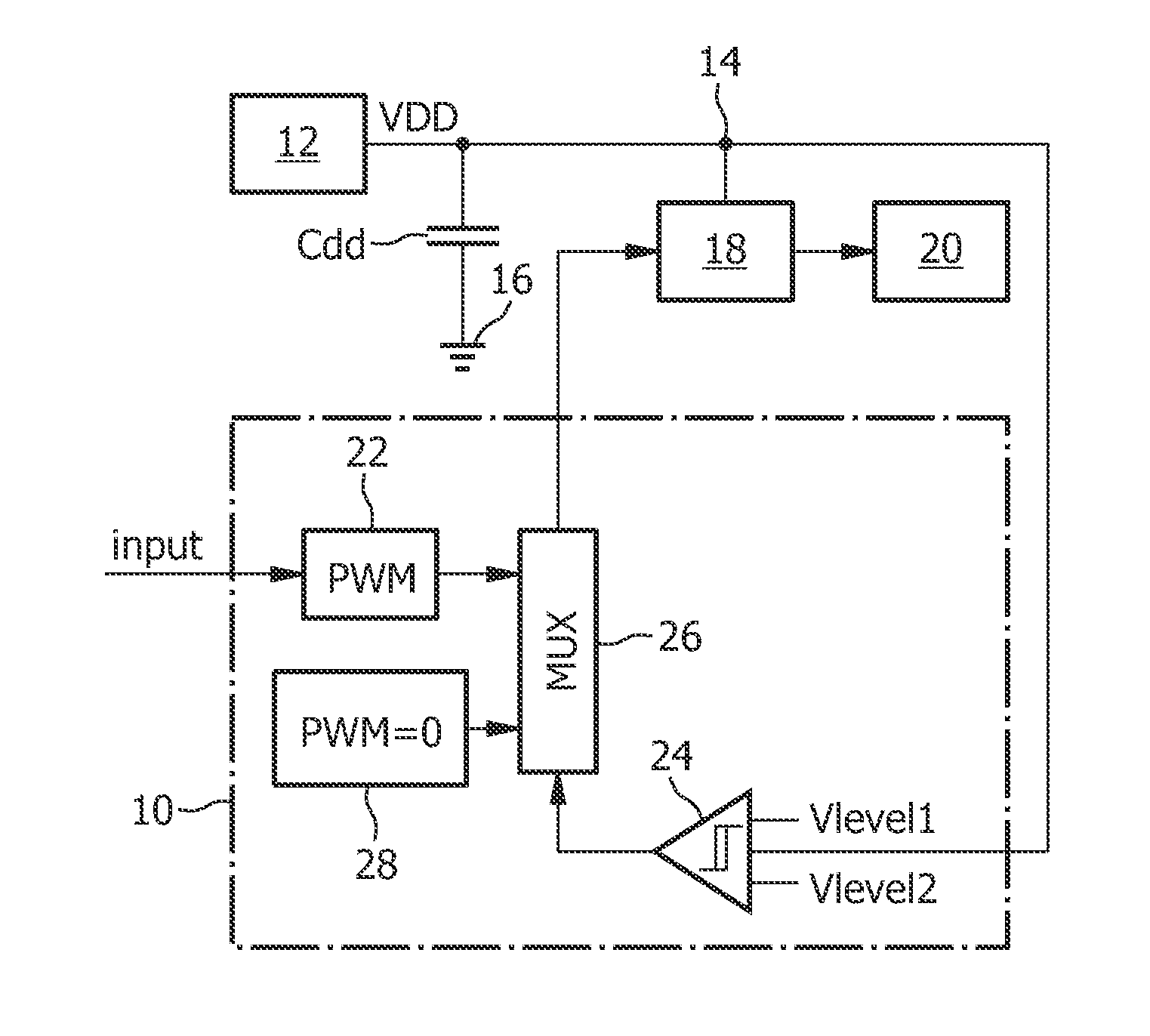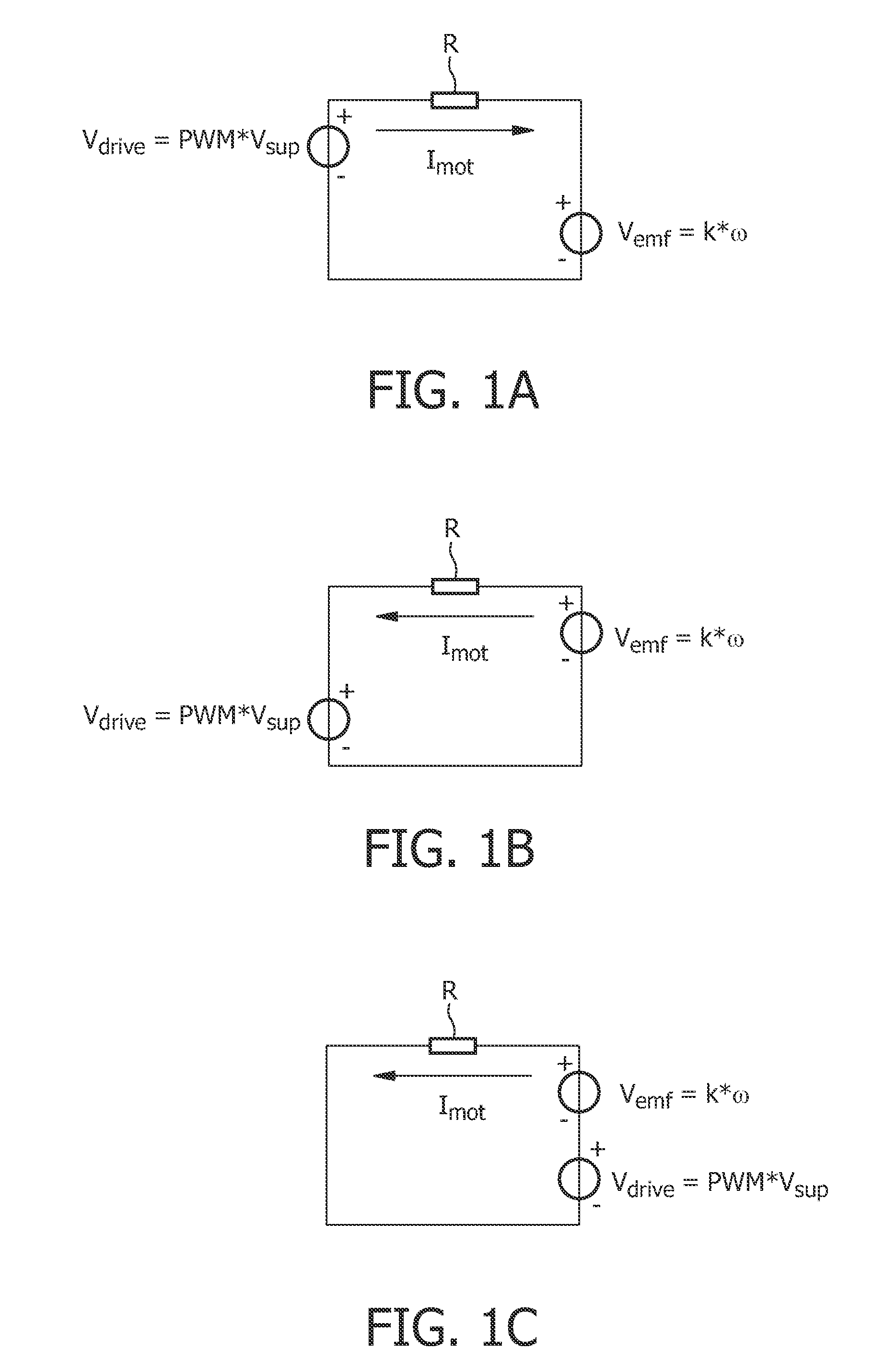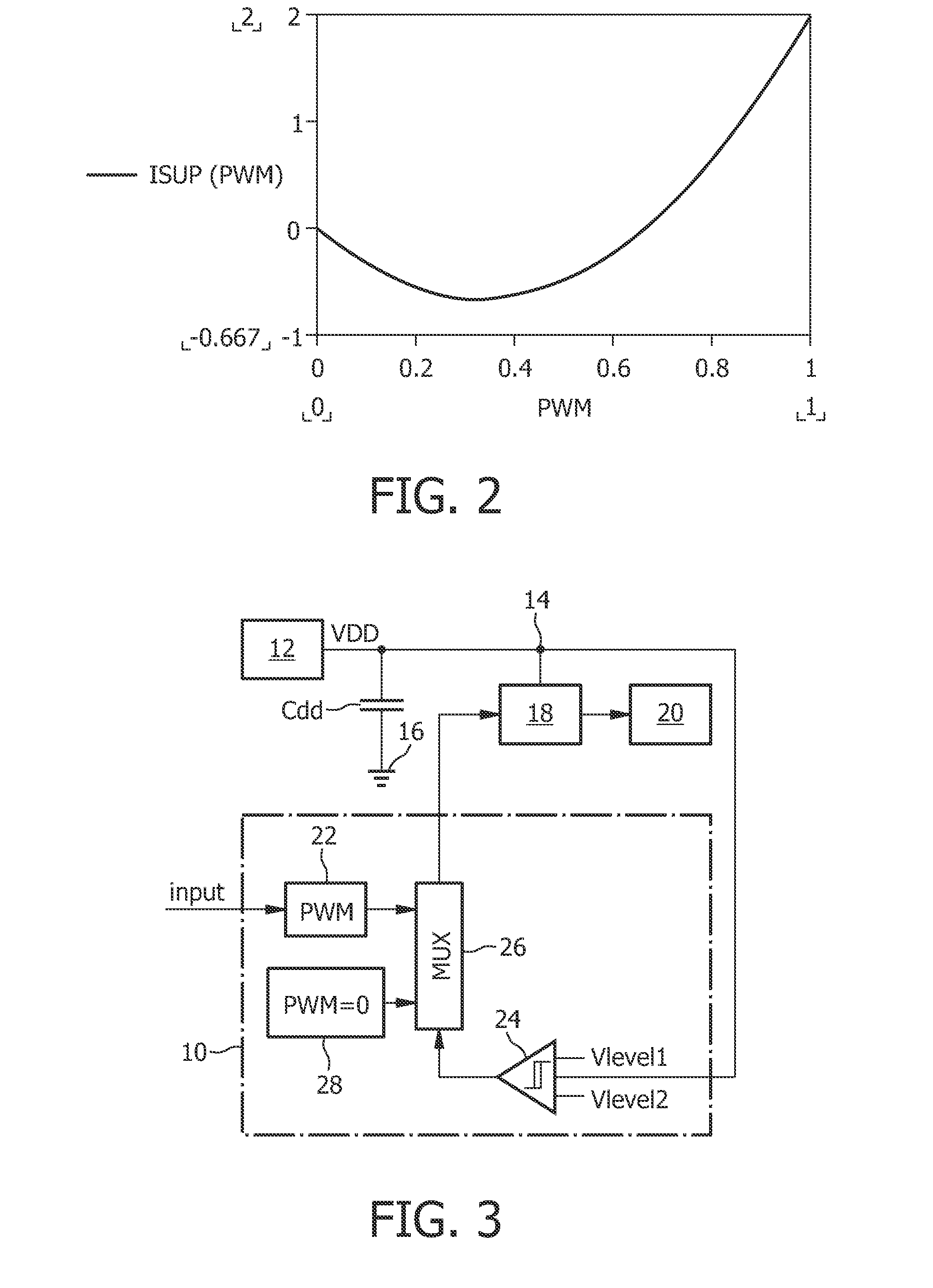Method for Controlling a Deceleration Process of a DC Motor and Controller
- Summary
- Abstract
- Description
- Claims
- Application Information
AI Technical Summary
Benefits of technology
Problems solved by technology
Method used
Image
Examples
first embodiment
[0034]FIG. 3 shows a block diagram of a circuit using a controller 10 in accordance with the invention and being suitable for performing the method in accordance with the present invention. Besides the controller 10, which will be explained in detail later, the circuit comprises a power supply 12 having a power supply output 14. The power supply 12 is intended to provide at the supply voltage output a constant voltage VDD. Between the power supply output 14 and ground 16 there is provided a decoupling capacitor Cdd. Furthermore, a bridge driver 18 coupled to the power supply output 14 is provided for driving a DC motor 20. The bridge driver 18 is controlled by the controller 10 which comprises means 22 in form of a PWM signal generator 22 for applying a deceleration PWM signal to the bridge driver 18. It should be clear that the PWM signal generator 22 can also be adapted to provide acceleration PWM signals, but such acceleration PWM signals are of lower interest for the present inv...
second embodiment
[0036]FIG. 4 shows a block diagram of a circuit using a controller 10 in accordance with the invention and being also suitable for performing the method in accordance with the present invention. Besides the controller 10, which will be explained in detail below, also the circuit of FIG. 4 comprises a power supply 12 having a power supply output 14. The power supply 12 is intended to provide at the supply voltage output a constant voltage VDD. As illustrated, a load current Iload is drawn from further circuitry not shown in detail. Between the power supply output 14 and ground 16 there is provided a decoupling capacitor Cdd. Again, a bridge driver 18 coupled to the power supply output 14 is provided for driving a DC motor 20. The bridge driver 18 is controlled by the controller 10 which in this case comprises means 22 in form of a PWM signal generator 22 for applying a deceleration PWM signal to the bridge driver 18. Also for the embodiment of FIG. 4 it should be clear that the PWM s...
PUM
 Login to View More
Login to View More Abstract
Description
Claims
Application Information
 Login to View More
Login to View More - R&D
- Intellectual Property
- Life Sciences
- Materials
- Tech Scout
- Unparalleled Data Quality
- Higher Quality Content
- 60% Fewer Hallucinations
Browse by: Latest US Patents, China's latest patents, Technical Efficacy Thesaurus, Application Domain, Technology Topic, Popular Technical Reports.
© 2025 PatSnap. All rights reserved.Legal|Privacy policy|Modern Slavery Act Transparency Statement|Sitemap|About US| Contact US: help@patsnap.com



